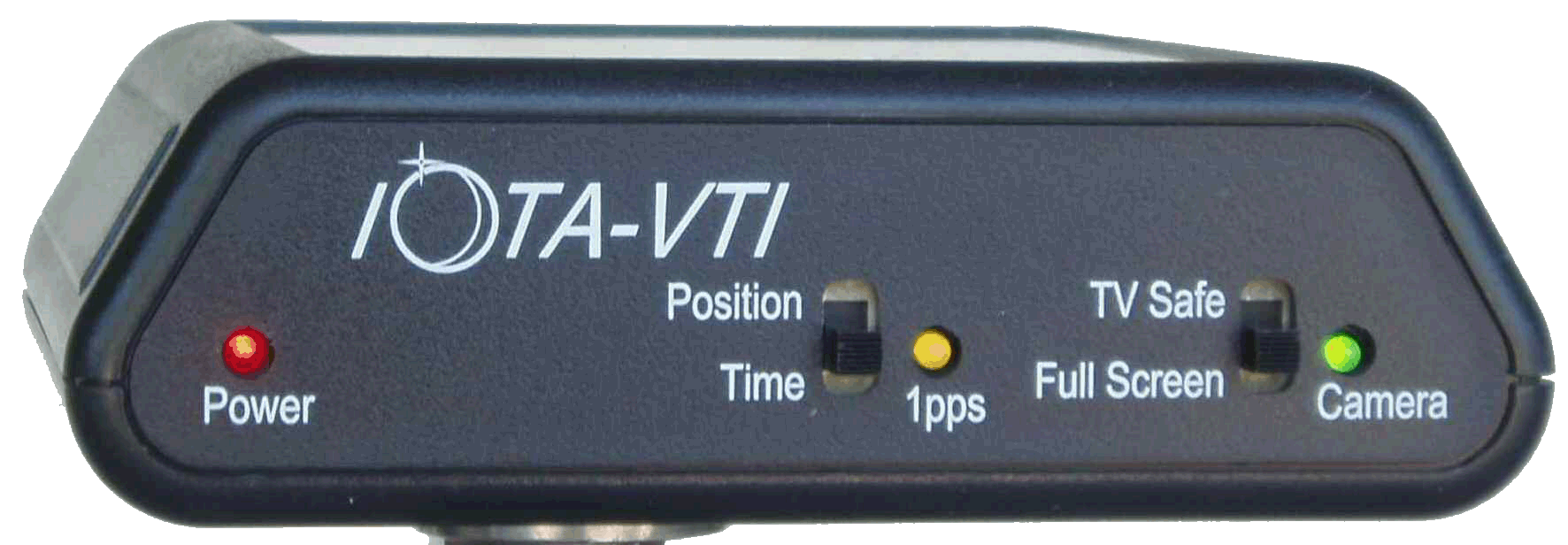Our experiment requires that we have accurate knowledge of each telescope’s location as well as the time of any images collected. This requirement used be a lot of work to get right. In the early 1990′s the Global Positioning System (GPS) was created. This system of satellites in orbit above the Earth can be used to derive accurate time and position. For the purposes of our project, the position (latitude, longitude, and altitude) is known far better than we need. Typical uncertainties on position tend to be something like 10-30 feet. We could get by with positions as bad as a half mile if we had to. The timing is more critical and a typical requirement is to know when each image is taken to better than 1/1000 of a second. This too, can be done with GPS data but it does require some specialized hardware to get this precision.

Video timer unit. This captures GPS signals and provides accurate time and position information on a video signal.
The method in common use for astronomical video imaging observation is to use a tool that will take an input video signal and superimpose a string of characters that indicate the date and time and then send the video signal out for recording. The first such device that reached a widespread use by amateur astronomers was the Kiwi-OSD, so named for the New Zealander, Kiwi Geoff, who designed and built the unit. These boxes are no longer available except on the used market. More recently, there is a new box made and sold called the IOTA-VTI that will perform this function. We will be using this newer system in our project. There are other competing systems but this is the only one still being built that was designed with occultation observations in mind.
Video timer unit. This captures GPS signals and provides accurate time and position information on a video signal.
For those volunteers that want to by matching equipment of their own, we are getting the IOTA-VTI Basic. The basic has an integrated GPS antenna and counts on being outside with a view of the sky. Those with a dome enclosure that will affect the GPS signal might want to consider the EX option which uses an external antenna. We also recommend spending the extra to get your unit personalized. This will make tracking video observations easier once we start taking data.
